I discovered that the .040" ID for the nozzle was an error, it works much better at .090". Alternatively, the nozzle could be eliminated altogether, as the extension tube also has an ID of .090". I have updated all of the drawings, all are noted as being placed in the public domain, and they are now available in post #1 of this thread.
I also have photos!
The first one shows the mixing block assembly mounted on the Clausing mill. The Mini Mag mount works quite well, and the arms and clamp assemblies are of my own making. The clamp assemblies are made from black acetal and the rods are simply 5/16" mild steel rods. The clamp assemblies required the use of fine thread bolts to get enough clamping pressure to keep everything in place. The valve on the left side of the mixing block controls the air flow, and the one on the bottom controls the volume of coolant. It can be adjusted to use only air, only coolant, or a mixture of the two. The ideal setting using a nice flow of air, with just enough coolant to barely get things damp. It works well anywhere from 10 to 25 PSI. High pressures and flow rates could potentially cause it to atomize the coolant, creating the dreaded fog in the air, not what we want!
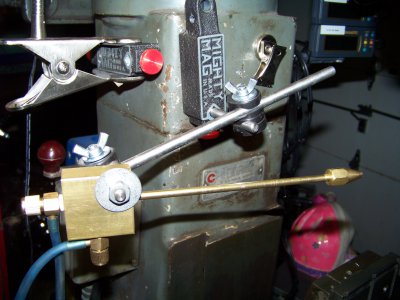
The next photos are shots taken from various angles, showing the whole system off of the mill. The coolant in the reservoir has been in there since the tool was completed, which was back in September or October. It is a heavy mixture of Rustlick Synkool (thus the blue color) and it has not had any problem with bacterial growth. I brought the entire system in from the garage and placed it in the basement before the freezing weather came this past fall. No problems so far. The nozzle could be omitted since it's ID is the same as that of the extension tube, but it helps to counterbalance the mixing block. These photos also show the small ball valve between the regulator and the reservoir. It is used to stop and start the flow of air and coolant without disturbing the pressure regulator or the needle valve settings. You can ignore the female quick coupler for compressed air, I needed a pipe plug for that port of the brass cross and didn't have one, also did not have a tee instead of the cross, so the coupler is a stand-in.
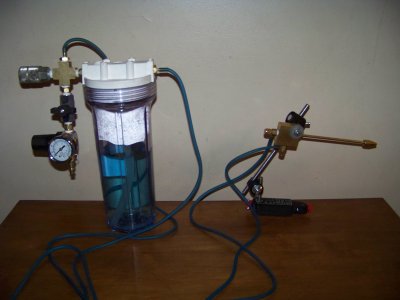
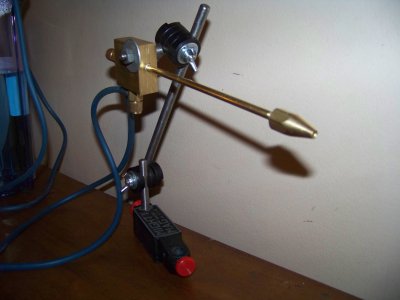
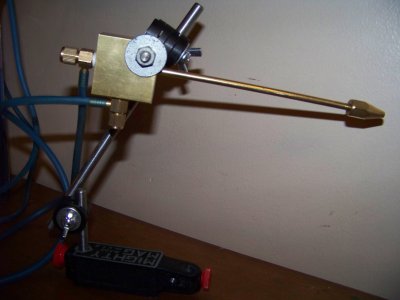
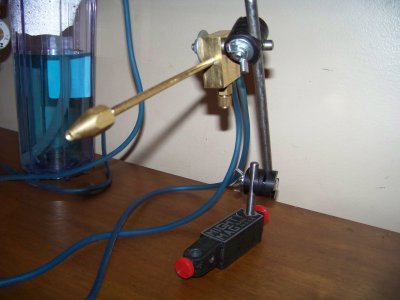
So far I am quite satisfied with it, and plan to make another one for WD40. As I mentioned elsewhere, I plan to mount both of them on an old IV stand on wheels, allowing me to easily switch to the proper coolant for ferrous materials or for aluminum, and will allow me to easily move them back and forth between the lathe and the mill. When I make the new one for the WD40, I will take photos as I go and post them here as well. Construction is very straight forward, and is quite easy. The only thing I will recommend is to take your time when drilling the .040" coolant passage in the mixing block. Use a high RPM, and advance the drill slowly, bringing it back out often to clear the chips. If you drill the .090" air passage first, be extremely careful to not break the .040" drill bit when it breaks through into the .090" passage.
If anyone is interested in drawings for the rod clamps, I have included it here also:
View attachment Rod Clamp.pdf
Enjoy!!










